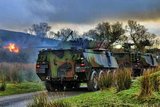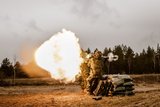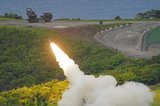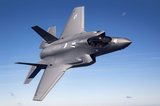Unconventional 'resistance' cells urged for Baltic defense: study
A Pentagon-commissioned report published 15 April envisions equipping Estonia, Latvia and Lithuania with ‘resistance’ cells armed with unconventional weapons to deter Russia from invading.
These capabilities would range from cyber to drones to long-range mobile communications and non-lethal weapons as well as small arms, explosives, anti-tank and anti-aircraft weapons, the Rand Corporation report said.
‘Total defense and unconventional warfare capabilities can complement the existing conventional defense efforts of the Baltic states and NATO,’ said Stephen Flanagan, the report's lead author. He said such cells would also buy time for national and NATO responses if Russia did invade one or all of the tiny republics on its western border, as it did with Crimea in 2014.
NATO members since 2004, the Baltic states, which like Ukraine have an ethnic Russian minority, are already in the process of building up its special forces units.
The report called for strengthened cooperation between the Baltic states, the European Union and NATO in areas such as crisis management, intelligence, resistance and fighting disinformation. The idea proposed by the report's authors would be to organize each Baltic country's defences around four levels of resistance.
‘Violent’ units made up of special forces, reservists and undefeated combat units would be charged with carrying out ambushes or freeing prisoners, under the scheme outlined in the report. Less heavily equipped units composed of police or amateur sharpshooters would be in charge of sabotage operations. Civilians would be looked to for intelligence support, to care for the wounded and feed combatants.
The report recommends supplying the Baltic states with night-vision goggles, portable computers, cameras and all-terrain vehicles as part of a program estimated to cost an initial $125 million.
More from Defence Notes
-
![How might European countries look to tackle drone incursions?]()
How might European countries look to tackle drone incursions?
Disruption of infrastructure in Europe, whether by cyberattack, physical damage to pipelines or uncrewed aerial vehicles flying over major airports, as has happened more recently, is on the rise. What is the most effective way of countering the aerial aspect of this not-so-open warfare?
-
![Taiwan approved for $11 billion weapon purchase from US]()
Taiwan approved for $11 billion weapon purchase from US
The US State Department’s approval of a multi-billion-dollar sale of weapons to Taiwan includes tactical mission networks equipment, uncrewed aerial systems, artillery rocket systems and self-propelled howitzers as well as anti-tank guided missiles.
-
![US National Security Strategy prioritises advanced military capabilities and national industry]()
US National Security Strategy prioritises advanced military capabilities and national industry
The 2025 NSS has emphasised investment in the US nuclear and air defence inventory and national industry, but it leaves multiple unanswered questions on how the White House will implement this approach.
-
![Canada set to look away from its neighbour and across the Atlantic for partners]()
Canada set to look away from its neighbour and across the Atlantic for partners
While non-EU UK struggles to join the Security Action for Europe initiative, which provides loans for defence programmes, Canada has become the first country outside Europe to get access – and did so for a nominal fee.
























